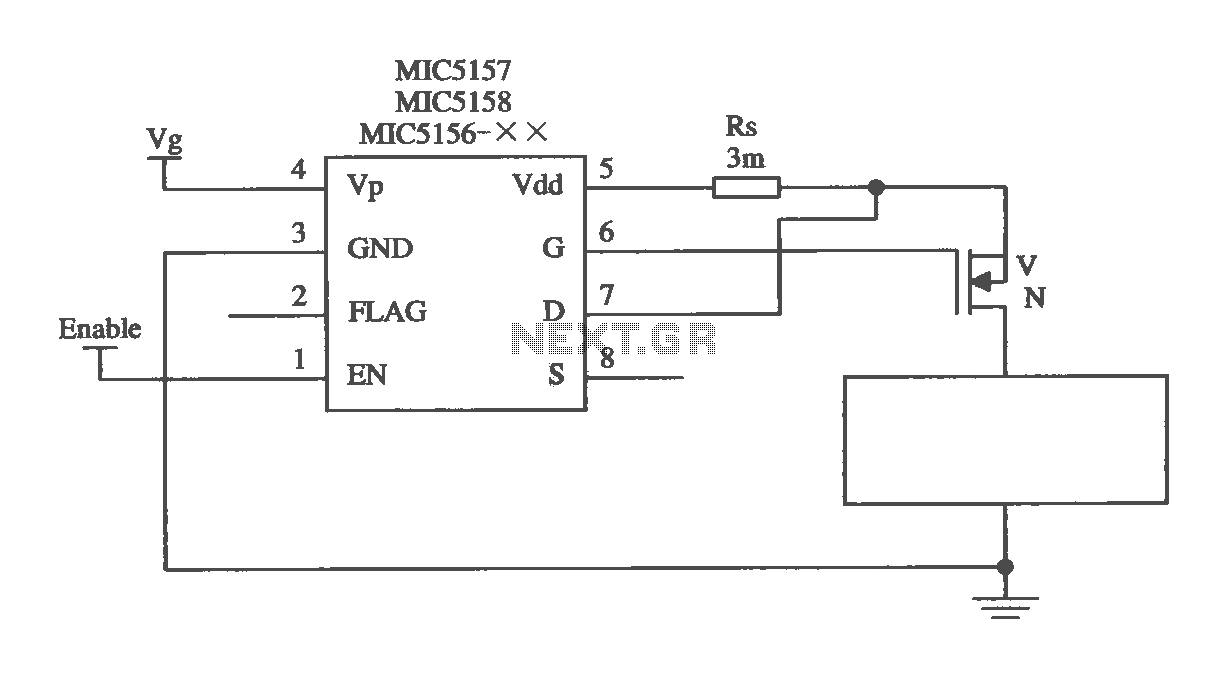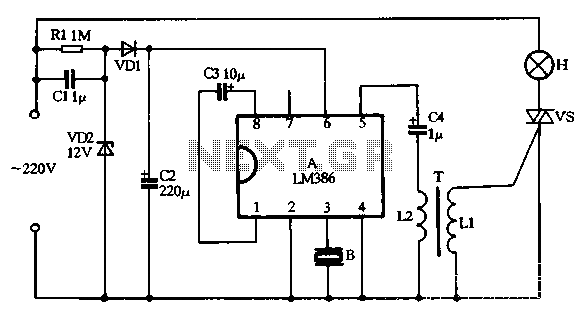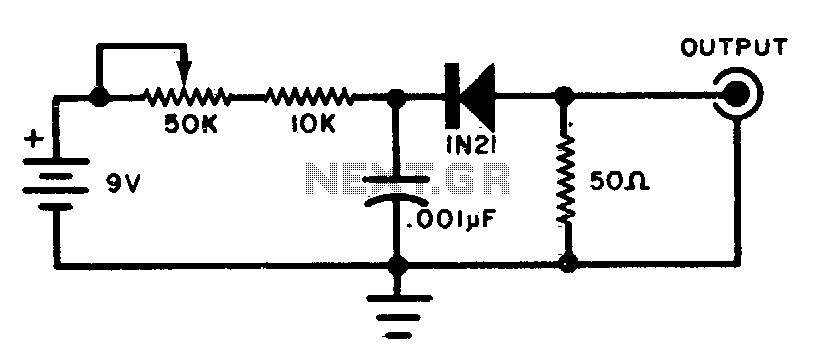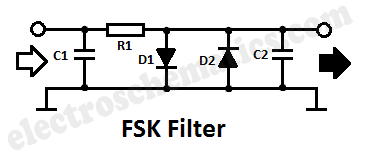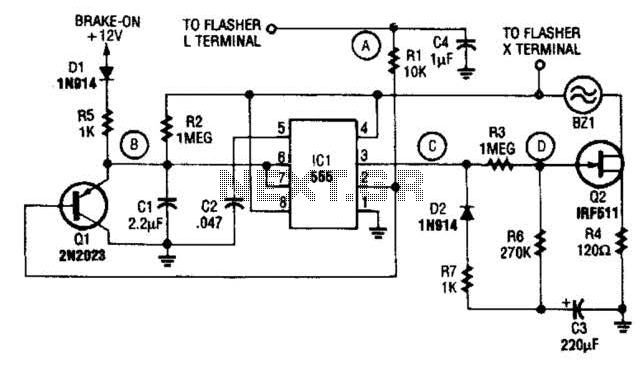
Wideband DTV UHF Antenna TV Amplifier Circuit using transistor 2sc3358
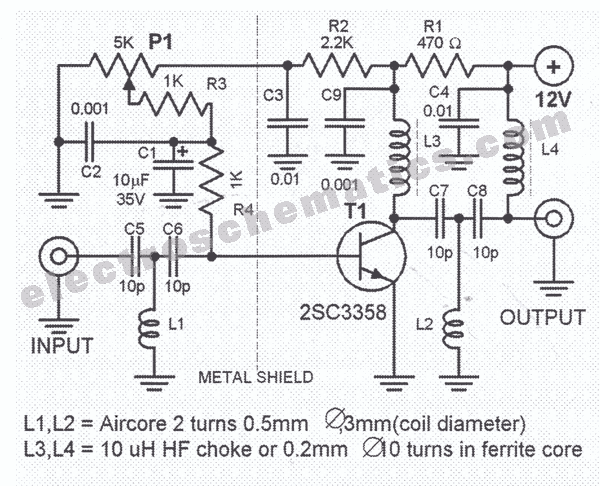
This HD TV UHF wideband amplifier (Ultra High Frequency amplifier) provides a total gain of 10 to 15 dB within the frequency range of 400 to 850 MHz, making it suitable for areas with weak television signals. To ensure optimal performance of this UHF antenna TV amplifier, it is essential to keep the component pins as short as possible. Components C1, C2, C6, and C7 are of SMD (Surface Mount Device) type. Additionally, this antenna TV amplifier or UHF wideband amplifier should be housed within a metal enclosure and positioned close to the TV antenna.
The HD TV UHF wideband amplifier is designed to enhance the reception of television signals in the UHF frequency range, specifically between 400 MHz and 850 MHz. This frequency range is critical for receiving various digital and analog television broadcasts. The amplifier's gain of 10 to 15 dB is significant enough to boost weak signals, improving the overall quality of the received television content.
To maximize the effectiveness of the amplifier, it is crucial to minimize the length of the component leads. Longer leads can introduce unwanted inductance and capacitance, which can degrade the amplifier's performance and introduce noise into the signal. The use of SMD components, such as C1, C2, C6, and C7, facilitates a compact design and allows for shorter connections, further enhancing signal integrity.
The requirement to enclose the amplifier in a metal box is essential for shielding against electromagnetic interference (EMI) and radio frequency interference (RFI). This shielding helps maintain the quality of the amplified signal by preventing external noise from corrupting the transmission. Furthermore, placing the amplifier close to the TV antenna reduces the length of the coaxial cable required, which can also contribute to signal loss.
In summary, the design and implementation of the HD TV UHF wideband amplifier involve careful consideration of component selection, layout, and housing to achieve optimal performance in enhancing weak television signals. Proper assembly and installation are critical to ensure that the amplifier functions effectively within its specified frequency range.This HD TV UHF wideband amplifier (Ultra High Frequency amplifier ) has a total gain of 10 to 15 dB in the 400 850 MHz domain frequency so it can be used where the tv signal is weak. For this UHF antenna tv amplifier to work correctly you need to cut the components pins as short as possible.
C1, C2, C6, C7 are SMD type ( surface mounted ). Thi s antenna tv amplifier or uhf wideband amplifier need to be build inside of a metal box and then connected close to the tv antenna. 🔗 External reference
The HD TV UHF wideband amplifier is designed to enhance the reception of television signals in the UHF frequency range, specifically between 400 MHz and 850 MHz. This frequency range is critical for receiving various digital and analog television broadcasts. The amplifier's gain of 10 to 15 dB is significant enough to boost weak signals, improving the overall quality of the received television content.
To maximize the effectiveness of the amplifier, it is crucial to minimize the length of the component leads. Longer leads can introduce unwanted inductance and capacitance, which can degrade the amplifier's performance and introduce noise into the signal. The use of SMD components, such as C1, C2, C6, and C7, facilitates a compact design and allows for shorter connections, further enhancing signal integrity.
The requirement to enclose the amplifier in a metal box is essential for shielding against electromagnetic interference (EMI) and radio frequency interference (RFI). This shielding helps maintain the quality of the amplified signal by preventing external noise from corrupting the transmission. Furthermore, placing the amplifier close to the TV antenna reduces the length of the coaxial cable required, which can also contribute to signal loss.
In summary, the design and implementation of the HD TV UHF wideband amplifier involve careful consideration of component selection, layout, and housing to achieve optimal performance in enhancing weak television signals. Proper assembly and installation are critical to ensure that the amplifier functions effectively within its specified frequency range.This HD TV UHF wideband amplifier (Ultra High Frequency amplifier ) has a total gain of 10 to 15 dB in the 400 850 MHz domain frequency so it can be used where the tv signal is weak. For this UHF antenna tv amplifier to work correctly you need to cut the components pins as short as possible.
C1, C2, C6, C7 are SMD type ( surface mounted ). Thi s antenna tv amplifier or uhf wideband amplifier need to be build inside of a metal box and then connected close to the tv antenna. 🔗 External reference
